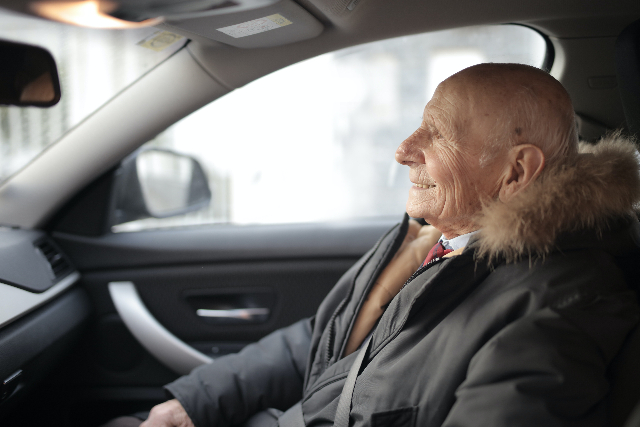Maneuvering through the world of travel can be an exciting adventure, but for those living with Parkinson’s disease, it may also come with some challenges. However, having Parkinson’s shouldn’t hinder someone’s desire to travel. With thoughtful planning and an anticipatory approach, it’s fully possible to explore new destinations. In this blog post, you’ll learn insightful traveling with Parkinson’s tips and strategies to make your travel experience as smooth and enjoyable as possible.
Travel Packing Checklist
It’s important to pack all of the essentials for your trip. From medications to your health insurance card, you’ll want to ensure a hassle-free journey while making the most out of your time. Below is a packing checklist to use when traveling with Parkinson’s.- Medication
- Water bottle and snacks
- Transportation tickets
- Health insurance card
- Parkinson’s disease identification
- Government-issued ID and passports (Depending on the destination)
- Credit/debit cards
- Cash
- Versatile and comfortable outfits
Planning and Travel Strategies
Traveling is filled with new sights and experiences. For those living with Parkinson’s disease, it’s crucial to have the right planning strategies in place. Below you’ll find valuable tips on how to have a smooth experience when traveling with Parkinson’s. From managing medication schedules to getting assistance from airlines, we’ll explore essential tips when traveling with Parkinson’s.SEE ALSO: When Caring for a Friend or Family Member Becomes Too Much
Notify the Doctor Before Traveling
Before heading out, make sure you consult with the doctor for medical approval. A recommended time frame of 4 to 6 weeks before departure ensures that you’ll have plenty of time to discuss and plan for potential scenarios with your healthcare team. You’ll also get tailored advice based on your current health status.Arrive Early
You can avoid the anxiety and stress of being in a rush to get to your gates. Arrive at the airport early at least two hours prior to your departure to get ahead of the crowds. Keep in mind, you’ll need to factor in the traffic along the way to the airport.Request Assistance at the Airports
At the airport, consider requesting additional assistance. This can include help with luggage or a wheelchair. You may need a physician’s certificate of need, so it’s best to contact the airline ahead of time. Having additional assistance can limit stress and make traveling a bit easier.Be the First to Board
If you or your loved one has Parkinson’s, you should inform the boarding staff so they can provide boarding and seating assistance sooner than everyone else.Navigating Different Methods of Transportation
 Traveling with Parkinson’s has a set of challenges, and making your way through different methods of transportation can be one of them. With a proper plan in place, it becomes much more manageable. Whether it’s a long flight, a cross-country bus journey, or traveling to a new destination by car, each method should have thoughtful consideration and planning for those living with Parkinson’s. Below are traveling with Parkinson’s tips for different methods of transportation.
Traveling with Parkinson’s has a set of challenges, and making your way through different methods of transportation can be one of them. With a proper plan in place, it becomes much more manageable. Whether it’s a long flight, a cross-country bus journey, or traveling to a new destination by car, each method should have thoughtful consideration and planning for those living with Parkinson’s. Below are traveling with Parkinson’s tips for different methods of transportation.
Tips for Traveling by Airplane
Many airports are large and complex to navigate. You can be subject to more delays and cancellations in comparison to ground transportation. With that being said, here are ways to overcome the challenges that come with flying:- Whenever possible, book a nonstop flight to your destination so you can avoid inconvenient transfers and long layovers.
- Pay attention to early boarding announcements so you or your loved one can get settled in before the other passengers board the plane.
- Use the airport’s restroom so you can avoid using the airplane’s restroom.
- Medications should be stored in your carry-on bags.
- Ask for meet-and-assist services from the airline.
Tips for Traveling by Ground Transportation (Bus, Car, Train)
Ground transportation offers a little more convenience than traveling by plane, especially when it comes to sightseeing, increased legroom, and possibly meeting new people. Here are tips you can use when traveling by ground transportation:By Bus
- Contact the bus company ahead of time to inquire about additional services such as assistance with boarding and de-boarding.
- Request to sit next to your travel companion or caregiver.
- Reserve an aisle seat that’s close to the exit so that it’s easier to get on and off.
By Car
- When someone with Parkinson’s is driving, it’s best to take a nap before starting the road trip.
- For long road trips, break it up into shortened distances and make periodic stops.
- Share driving with another travel companion.
By Train
- Take advantage of services offered for people with special needs.
- Seats can often be removed so that a wheelchair can be accommodated.
- Bring a photo ID.
- Request an aisle seat so that you can be more comfortable and be able to easily get on and off.
Takeaway
It’s important to keep in mind that Parkinson’s doesn’t have to be a barrier to exploring various destinations. While it may need more planning, the delight that comes from enjoying new experiences is well worth it. By requesting assistance when needed, making strategic choices about transportation, and staying on top of your medication schedule, you can embark on a journey that’s blissful and memorable.To get in touch with Suncrest Senior Living please complete the form below:
CONTACT A SUNCREST SENIOR CARE SPECIALIST
PHONE: (248) 207-5378


